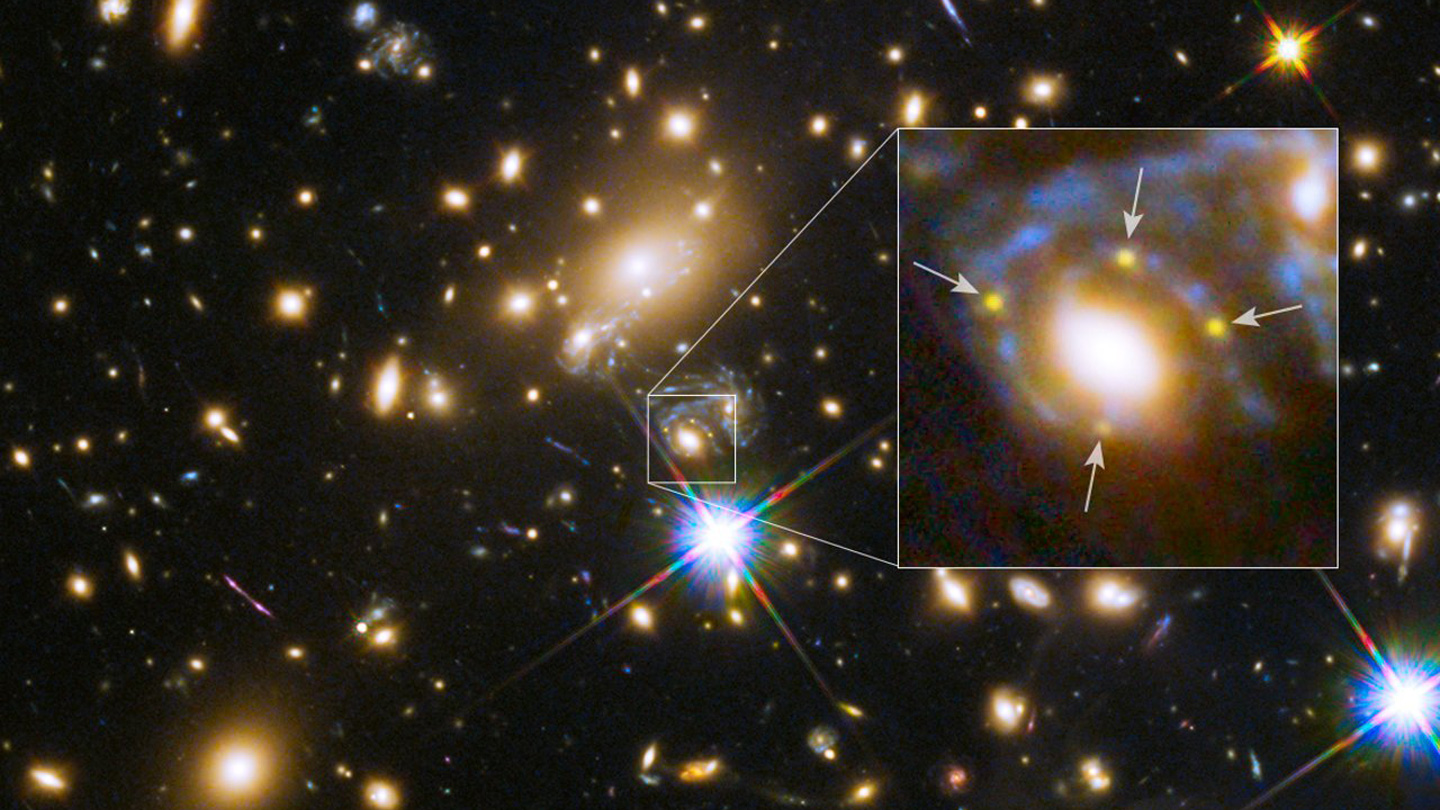
An artist’s impression of a black hole consuming gas
John A. Paice
In the distant universe, a supermassive black hole seems to be devouring an enormous cloud of gas, producing an extraordinary explosion the likes of which we’ve never seen before. So far, it has released about 100 times the total energy the sun will release in its entire lifetime, and it hasn’t finished yet.
This gigantic inferno, called AT20211wx, was first spotted in 2020 by the Zwicky Transient Facility in California. Philip Wiseman at the University of Southampton in the UK and his colleagues performed a series of follow-up observations with other observatories in the years since then. “We see various different large explosions and flashes in the universe, but nothing anywhere near what we see here,” Wiseman says.
The only cosmic objects brighter than AT20211wx are quasars, which are caused by a continuous flow of gas into a supermassive black hole. This explosion, which brightened by a factor of more than 15 over the course of about four months and then began to steadily dim, is still ongoing. The observations seem to point to a supermassive black hole devouring a gargantuan cloud of gas, possibly 100 times larger than the solar system or even bigger.
These observations could help explain why some relatively small galaxies contain outsized black holes. “We thought we knew the main ways that black holes grow, but it seems like actually they might also grow in a different way to how we thought, with violent, explosive episodes of growth,” says Wiseman.
Additional analysis of this object could help elucidate exactly how that works, as well as how black holes behave more generally. “Because it’s so big, bright and long-lasting, it allows us to take a good close look at the inner workings of what happens when material falls into a black hole,” says Wiseman.
Topics:














